How To Make The Best Goat Milk Yogurt
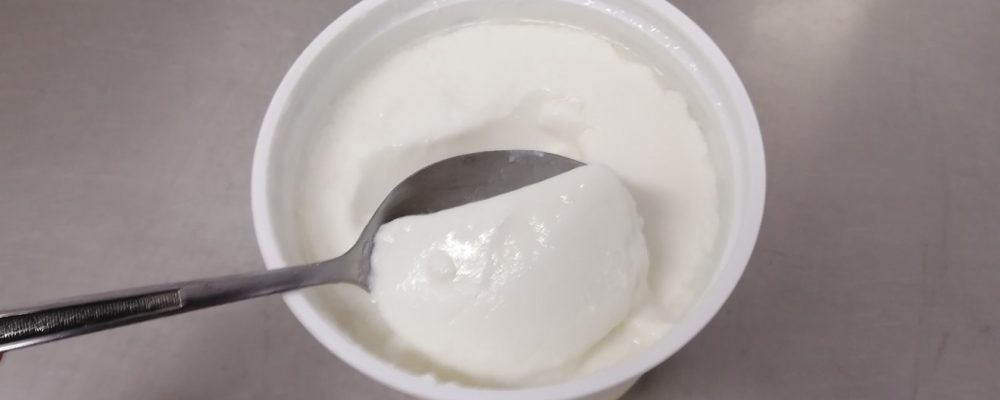
Goat milk acts slightly different than cows milk. Goat milk yogurt doesn’t naturally firm up as cow milk yogurt does. This has to do with a different protein structure in goat milk.
This has nothing to do with the acidity or the amount of probiotic live bacteria in goat milk yogurt. Runny yogurt is just as healthy as thick yogurt.
In order to make Goat Milk Yogurt firm we need to add a thickener. In this recipe we use agar. Agar is derived from seaweed and is very potent, so only a small amount is needed. Alternatives to use are gelatine or pectin.
To further thicken the milk you can use milk powder, preferably goat milk powder, but this is optional.
The milk used for yogurt needs to be heated to 90 C/ 190 F. This is necessary so the yogurt won’t separate from the whey. This works out well for the use of agar, since this thickener needs to be heated in order to work properly.
Check out our post on How to Make Cheese at Home to learn the art of making cheese. It’s a fun project for everyone.
For easy homemade cheese recipes check out our Cheese Making Recipes page.
If you are interested in the world of cheese making, visit our cheese Resource page and our How Cheese is Made post.
We review and suggest Cheese Making Kits here if you would like to get started with making cheese.
Enjoy!!!
Goat Milk Yogurt Recipe
Ingredients:
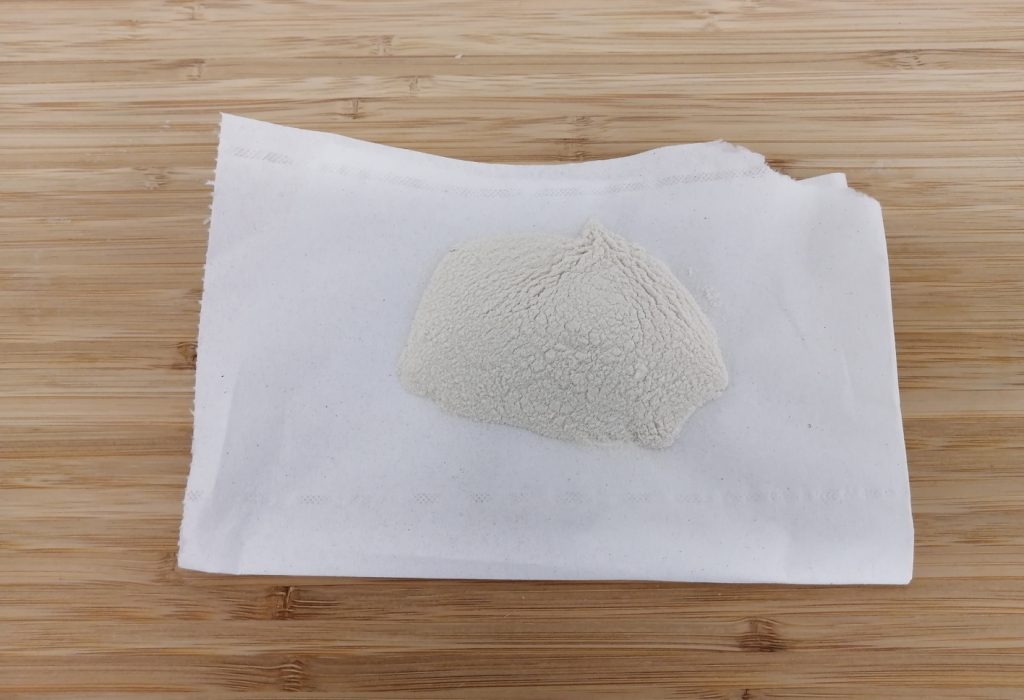
Agar is a seaweed based thickener that works well for goat milk yogurt
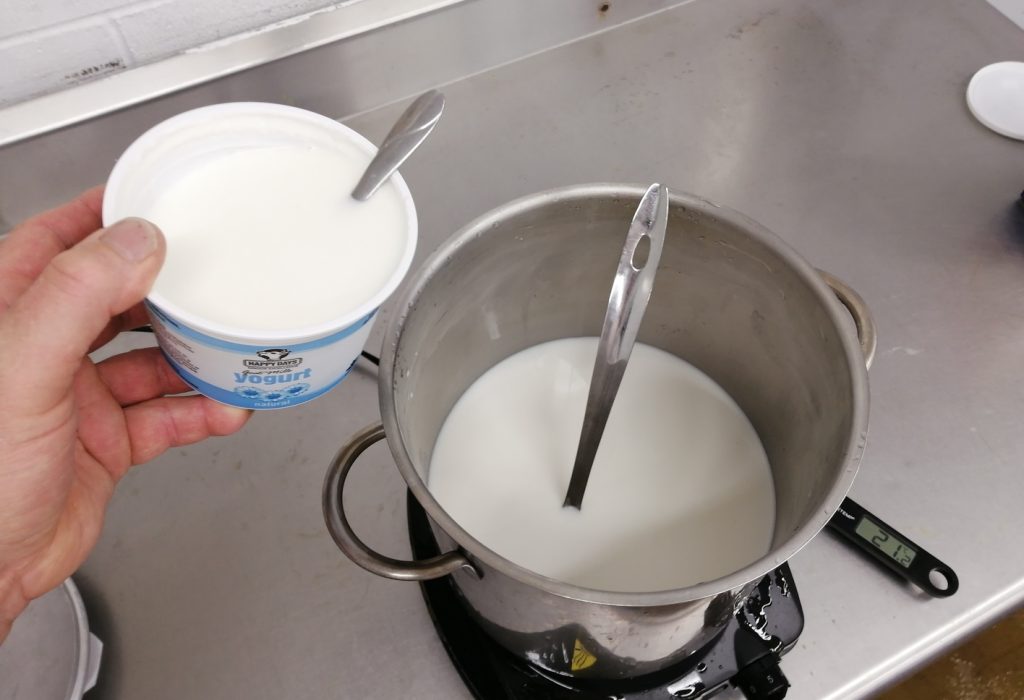
Goat milk yogurt with active life bacteria works well as starter culture
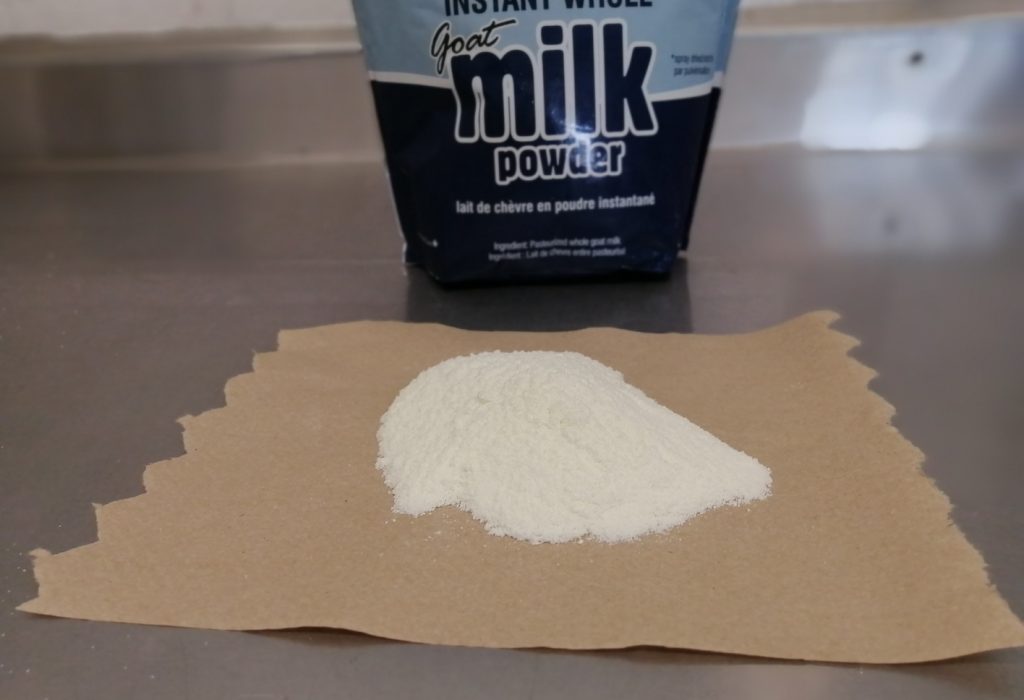
Goat milk powder helps to additionally thicken the yogurt
Procedure:
- Add milk, agar, and milk powder to a pot.
- Heat the milk to 90 C/ 190 F. Stir constantly.
- Keep it at that temperature for 15 minutes.
- Fill cold water into the kitchen sink and place the pot with the hot milk into it.
- Under constant stirring cool the milk to 45 C/ 108 F.
- Add the yogurt culture and stir it in.
- If you have a yogurt maker, place the milk into the containers, or the bulk container if you have a bulk option and incubate for about 4 hours.
- If you don’t have a yogurt maker: Leave the milk in the pot or fill it into individual containers. Cover the pot or the containers and place it in a warm place. Ideally, the temperature of the milk shouldn’t drop below 38 C/100 F. To achieve that you can cover the pot with a plastic bag and a blanket, or you can place it into your stove with the “warm” setting. Check the stove temperature so it doesn’t get above 50 C/ 120 F.
- If you manage to keep the ideal temperature, the acidity will drop within 6 hours. If you have a pH meter, the pH should be at 4.5 or lower. If you don’t have a pH meter, make sure the milk became firm and tastes sour. It is important that the acidity has developed. If you are not sure, rather leave it too long than not long enough.
- Refrigerate the yogurt for 12 hours. It is then ready for consumption.
- If you want to continue to make your own yogurt, you can use your homemade yogurt as a starter culture for the next batch.
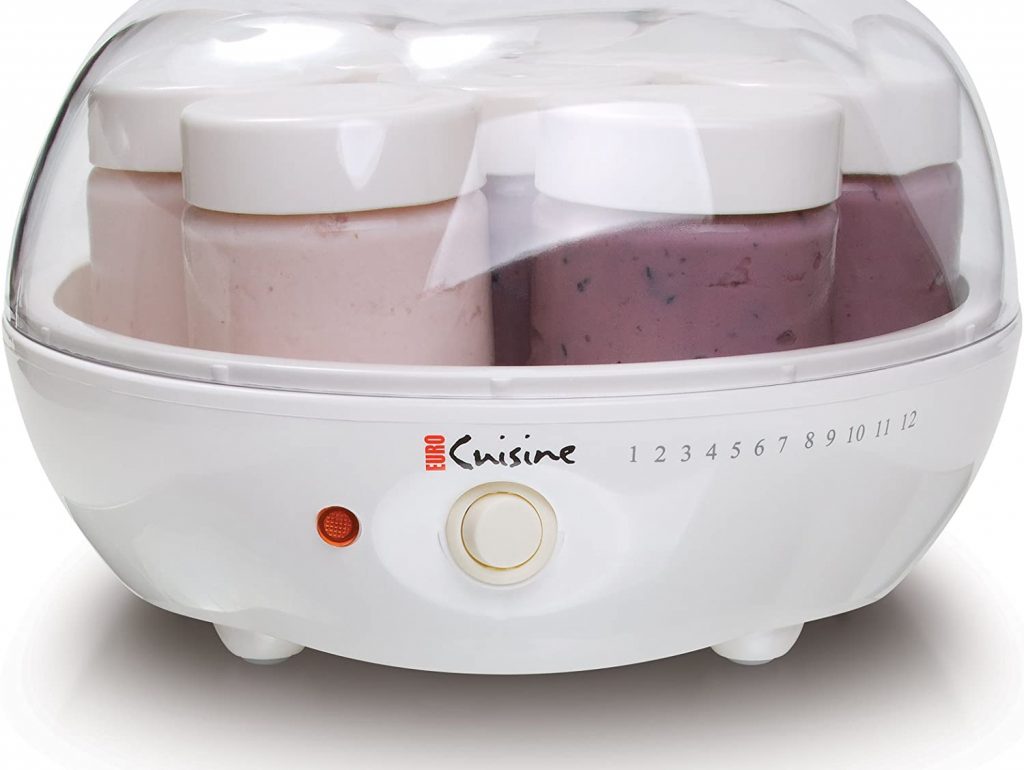
A yogurt maker helps keep the yogurt warm during the incubation
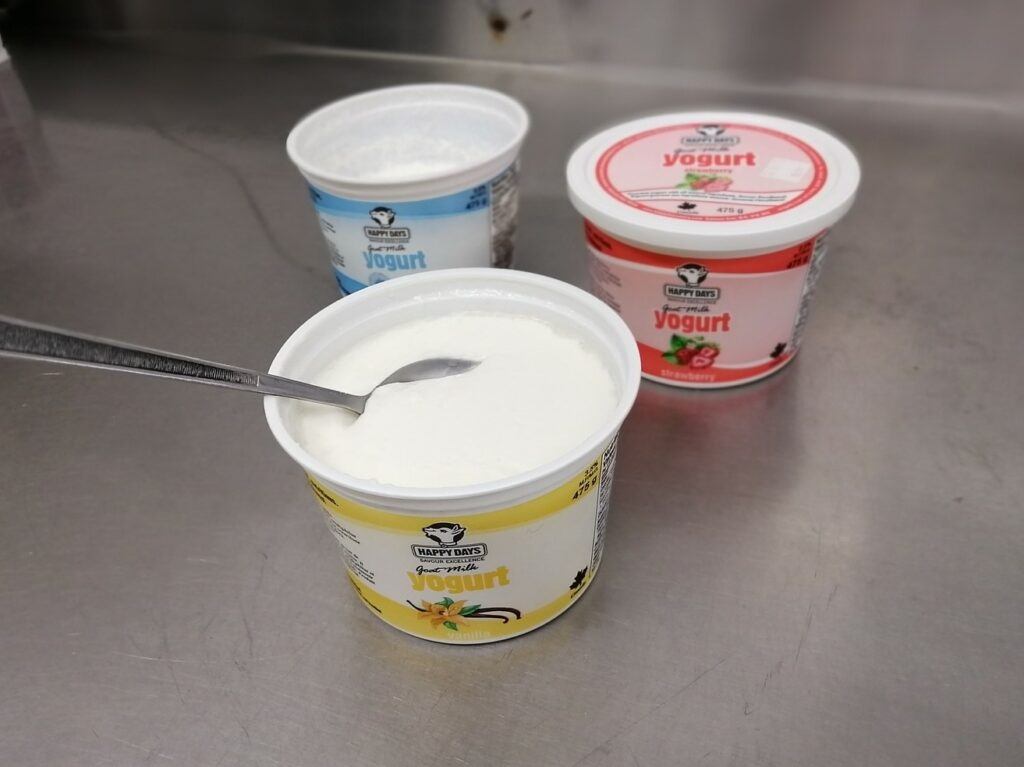
You can add flavours or fruit to each cup before or after incubating the yogurt
Troubleshoot
1.The yogurt is not thickening. This is the case when no acidification or slow acidification happens, which can have 3 reasons:
- You added the yogurt culture too early when the milk was still too hot. That can happen if your thermometer is not accurate. Don’t add the culture as long as the milk is over 50 C/ 120 F.
- Your yogurt cooled down too fast. The yogurt should keep a temperature of 38 C/ 100 F minimum during the first 2 hours.
- Your yogurt culture was not active. That can happen when you used a store bought yogurt that didn’t contain live bacteria, or was close to expiry and the bacteria were not active enough anymore. Or your freeze dried culture lost its activity due to not being kept in the freezer, or it has expired.
If this happens, give the yogurt more time. Even at room temperature, if there’s any bacterial activity, it can eventually come around.
- The yogurt has an unpleasant taste.
- You didn’t use fresh milk.
- Your tools were not clean
- You exposed the milk to direct sunlight or fluorescent light.
- The yogurt starts to mould after a few days. Mould spores are airborne. Clean your yogurt containers thoroughly before filling the yogurt in them.
Leave us a comment below about how your recipe turned out. Feel free to suggest ideas or what you would like to see in our recipes.
Enjoy!!!




